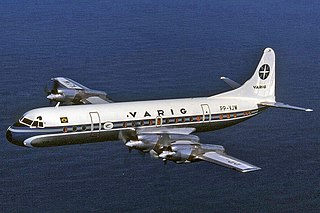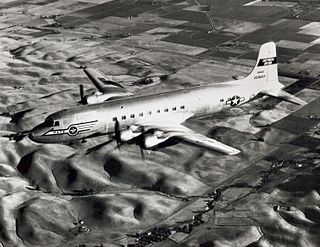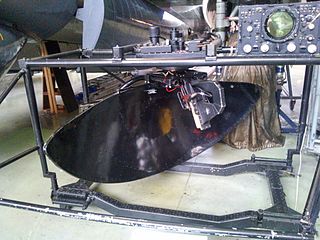August 21, 1955 (Sunday)
| | This section is empty. You can help by adding to it. (October 2015) |
- The Kelly-Hopkinsville encounter, a claimed alien and UFO encounter in Christian County, Kentucky.
| << | August 1955 | >> | ||||
|---|---|---|---|---|---|---|
| Su | Mo | Tu | We | Th | Fr | Sa |
| 1 | 2 | 3 | 4 | 5 | 6 | |
| 7 | 8 | 9 | 10 | 11 | 12 | 13 |
| 14 | 15 | 16 | 17 | 18 | 19 | 20 |
| 21 | 22 | 23 | 24 | 25 | 26 | 27 |
| 28 | 29 | 30 | 31 | |||
The following events occurred in August 1955:
| | This section is empty. You can help by adding to it. (October 2015) |
| | This section is empty. You can help by adding to it. (October 2015) |

Vitamins are organic molecules that are essential to an organism in small quantities for proper metabolic function. Essential nutrients cannot be synthesized in the organism in sufficient quantities for survival, and therefore must be obtained through the diet. For example, vitamin C can be synthesized by some species but not by others; it is not considered a vitamin in the first instance but is in the second. Most vitamins are not single molecules, but groups of related molecules called vitamers. For example, there are eight vitamers of vitamin E: four tocopherols and four tocotrienols.
Vitamin deficiency is the condition of a long-term lack of a vitamin. When caused by not enough vitamin intake it is classified as a primary deficiency, whereas when due to an underlying disorder such as malabsorption it is called a secondary deficiency. An underlying disorder can have 2 main causes:

Dorothy Mary Crowfoot Hodgkin was a Nobel Prize-winning English chemist who advanced the technique of X-ray crystallography to determine the structure of biomolecules, which became essential for structural biology.

The Lockheed P-3 Orion is a four-engined, turboprop anti-submarine and maritime surveillance aircraft developed for the United States Navy and introduced in the 1960s. Lockheed based it on the L-188 Electra commercial airliner; it is easily distinguished from the Electra by its distinctive tail stinger or "MAD" boom, used for the magnetic anomaly detection (MAD) of submarines.

The Lockheed T-33 Shooting Star is an American subsonic jet trainer. It was produced by Lockheed and made its first flight in 1948. The T-33 was developed from the Lockheed P-80/F-80 starting as TP-80C/TF-80C in development, then designated T-33A. It was used by the U.S. Navy initially as TO-2, then TV-2, and after 1962, T-33B. The last operator of the T-33, the Bolivian Air Force, retired the type in July 2017, after 44 years of service.

The Lockheed L-188 Electra is an American turboprop airliner built by Lockheed. First flown in 1957, it was the first large turboprop airliner built in the United States. With its fairly high power-to-weight ratio, huge propellers and very short wings, large Fowler flaps which significantly increased effective wing area when extended, and four-engined design, the airplane had airfield performance capabilities unmatched by many jet transport aircraft even today—particularly on short runways and high altitude airfields. Initial sales were good, but after two fatal crashes that led to expensive modifications to fix a design defect, no more were ordered. Jet airliners soon supplanted turboprops for many purposes, and many Electras were modified as freighters. Some Electras are still being used in various roles into the 21st century. The airframe was also used as the basis for the Lockheed P-3 Orion maritime patrol aircraft.

The Lockheed P-2 Neptune is a maritime patrol and anti-submarine warfare (ASW) aircraft. It was developed for the US Navy by Lockheed to replace the Lockheed PV-1 Ventura and PV-2 Harpoon, and was replaced in turn by the Lockheed P-3 Orion. Designed as a land-based aircraft, the Neptune never made a carrier landing, but a small number were converted and deployed as carrier-launched, stop-gap nuclear bombers that would have to land on shore or ditch. The type was successful in export, and saw service with several armed forces.
This is a list of aviation-related events from 1955.
This is a list of aviation-related events from 1954:
This is a list of aviation-related events from 1959.

This is a list of aviation-related events from 1960.
The year 1955 in science and technology included many events, some of which are listed below.

Hurricane hunters, typhoon hunters, or cyclone hunters are aircrews that fly into tropical cyclones to gather weather data. In the United States, the organizations that fly these missions are the United States Air Force Reserve's 53rd Weather Reconnaissance Squadron and the National Oceanic and Atmospheric Administration's Hurricane Hunters. Such missions have also been flown by Navy units and other Air Force and NOAA units. Other organizations also fly these missions, such as Government Flying Service Hong Kong.

The Fairchild C-119 Flying Boxcar is an American military transport aircraft developed from the World War II-era Fairchild C-82 Packet, designed to carry cargo, personnel, litter patients, and mechanized equipment, and to drop cargo and troops by parachute. The first C-119 made its initial flight in November 1947, and by the time production ceased in 1955, more than 1,100 had been built.

The Lockheed Model 14 Super Electra was an American civil passenger and cargo aircraft built by the Lockheed Aircraft Corporation during the late 1930s. An outgrowth of the earlier Model 10 Electra, the Model 14 was also developed into larger, more capable civil and military versions.

Vitamin B12, also known as cobalamin, is a water-soluble vitamin involved in metabolism. It is one of eight B vitamins. It is required by animals, which use it as a cofactor in DNA synthesis, and in both fatty acid and amino acid metabolism. It is important in the normal functioning of the nervous system via its role in the synthesis of myelin, and in the circulatory system in the maturation of red blood cells in the bone marrow. Plants do not need cobalamin and carry out the reactions with enzymes that are not dependent on it.

The 1955 Hawaii R6D-1 crash was an accident involving a Douglas R6D-1 Liftmaster of the United States Navy which crashed into a mountain peak in Hawaii on 22 March 1955, killing all 66 people on board. At the time, it was the worst crash involving any variant of the Douglas DC-6 airliner the second-worst aviation accident in U.S. history, and one of the worst air accidents anywhere in history, and it equaled the 11 August mid-air collision of two United States Air Force C-119G Flying Boxcars over West Germany and the 6 October United Air Lines Flight 409 crash as the deadliest air accident of 1955. It remains the worst air disaster in the history of Hawaii and the deadliest accident involving a heavier-than-air aircraft in the history of United States naval aviation.

The following events occurred in September 1955
The following events occurred in March 1955:

The AN/APS-20 was an airborne early warning, anti-submarine, maritime surveillance and weather radar developed in the United States in the 1940s. Entering service in 1945, it served for nearly half a century, finally being retired in 1991. Initially developed at Massachusetts Institute of Technology (MIT) under Project Cadillac, the radar was developed to be carried by aircraft to extend the sensor range of ships by placing a radar at altitude. Although developed for carrier-borne operation, first being installed in the single-engined General Motors TBM-3W Avenger, it was also used in larger four-engined airframes, the last being a fleet of Avro Shackleton AEW.2 which were converted from maritime patrol aircraft. Similarly, although developed for detecting aircraft, it saw extensive service in anti-submarine and maritime patrol roles and was one of the first radars to be used in researching extreme weather like hurricanes by agencies like the Environmental Science Services Administration (ESSA). As well as the United States, the radar was used by a large number of services in other countries, including the French Navy, Japan Maritime Self-Defense Force (JMSDF), Royal Air Force (RAF) and Royal Canadian Air Force (RCAF). Early versions of the radar could see a low-flying aircraft at 65 nautical miles and a ship at 200 nautical miles. This was improved, so that later versions had a range against aerial targets of 115 nautical miles.